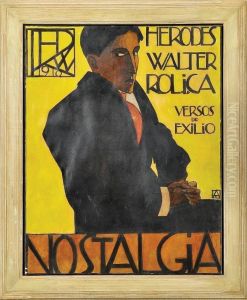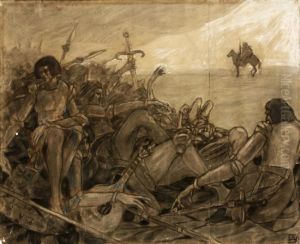Armando De Basto Paintings
Armando de Basto was a notable Portuguese painter and sculptor, born in 1889 in Porto, Portugal, and passing away at the young age of 34 in 1923. His artistic journey, although brief, was marked by a profound exploration of both painting and sculpture, embedding him within the fabric of early 20th-century Portuguese art. De Basto's work reflects a period of significant cultural and artistic shifts in Portugal, where the influence of modernist movements began to permeate the traditional Portuguese aesthetic sensibilities.
Armando de Basto's education and career were deeply entwined with the artistic movements of his time. He studied at the Escola de Belas Artes do Porto (School of Fine Arts of Porto), where he was exposed to a variety of artistic styles and techniques. This foundational education not only honed his skills but also instilled in him a deep appreciation for the rich traditions of Portuguese art. Despite his traditional training, de Basto was not immune to the currents of modernism sweeping through Europe. His works, particularly in painting, show a blend of traditional realism with hints of impressionist and expressionist influences, reflecting the tumultuous and evolving artistic landscape of early 20th-century Europe.
De Basto's contributions to Portuguese art were not limited to his own creations. He was an active member of several artistic circles and participated in numerous exhibitions, both in Portugal and abroad. His works were celebrated for their emotional depth and technical prowess, capturing the attention of both the public and critics alike. Unfortunately, Armando de Basto's promising career was cut short by his untimely death in 1923. Despite his brief career, de Basto's legacy in the Portuguese art scene remains significant. His ability to blend traditional techniques with modernist trends has left a lasting impression on the evolution of Portuguese art, making him a pivotal figure in its early 20th-century history.

